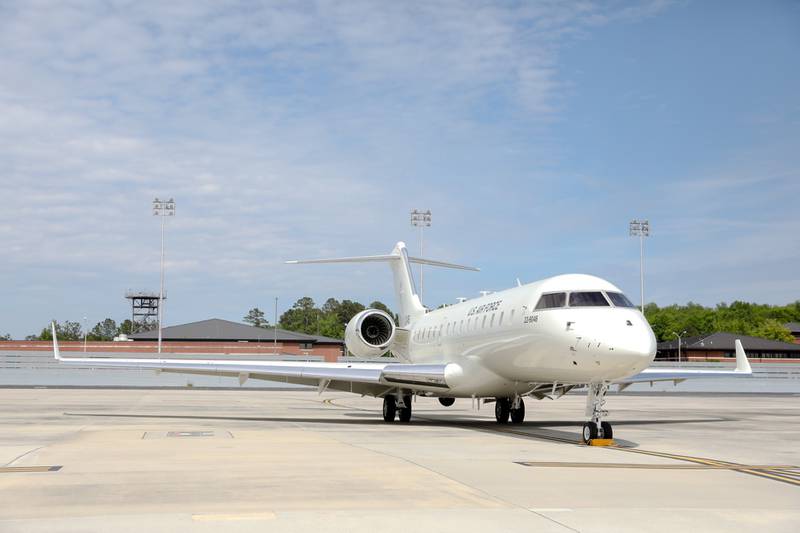The Air Force’s E-11A airborne communications relay planes have been referred to as “WiFi in the sky” for their ability to share battlefield data with faraway aircraft as well as troops on the ground, including across the mountainous terrain of Afghanistan for which they were developed.
The aircraft, a modified Bombardier business jet outfitted with Northrop Grumman’s Battlefield Airborne Communications Node payload, or BACN, is lesser known than the Air Force’s stalwart fleet of bombers, fighters and cargo jets. Now, with U.S. troops out of Afghanistan, the E-11 has taken on a new behind-the-scenes role supporting the multinational mission to deliver humanitarian aid to Gaza.
RELATED

Since March, the 430th Expeditionary Electronic Combat Squadron, the only unit in the Air Force to fly the aircraft, has supported more than 30 of the service’s airdrops in Gaza while operating out of an undisclosed location in U.S. Central Command. Pilots with the squadron who spoke with Air Force Times in an interview declined to discuss specific missions, but offered brief insights into their work in the region.
The Air Force has participated in 40 airdrops alongside coalition partners since March. Those missions were paused for more than a month as Israel’s invasion of the city of Rafah began in early May. The U.S. flew its most recent airdrop June 9.
“The BACN mission provides the Air Force, as well as joint and international partners, line-of-sight and beyond-line-of-sight interoperability, and that’s between dissimilar platforms with varying electronic capabilities,” 430th EECS Commander Lt. Col. R. Clayton “Vector” McCart said. “We capture, translate, combine and, ultimately, relay and extend legacy and modern comms and data links.”
That means flagging potential threats to the cargo aircraft ferrying shipments of food, any course corrections or other important details from mission planners and other troops around the area.
In a region as large as CENTCOM, airdrops can be derailed by a number of variables, from weather to other flight safety issues. The BACN aircraft, which carries two pilots, can quickly relay real-time changes coming from the Combined Air Operations Center in Qatar to mission partners on the front lines.
“We can monitor progress in a way that other platforms may not be able to see … as far as locations of the assets, the weather calls, etc. Weather plays a big factor in the airdrops off the coast of Gaza,” Capt. Britton “Rad” Ellington, an E-11A pilot who previously flew the service’s now-retired E-8C Joint Surveillance Target Attack Radar System, or JSTARS, aircraft, said.
With a range of more than 6,900 miles and a typical sortie time of around 10 hours, the aircraft can take over where satellite phones fail, and interpret transmissions between the military’s myriad communications systems that can’t otherwise connect. While AFCENT declined to say how many of the service’s seven E-11As are operating in theater, the 430th acts as a data lilypad for more than 1,000 hours every two weeks.
“We’re just not relegated to an airdrop. For instance, we could do that as a part of a larger expectation from CENTCOM leadership, and just move around the battlespace. … We’re not really tethered to any one location,” McCart said.
The E-11A is in the process of establishing its new home at Robins Air Force Base, Georgia, within the 18th Airborne Command and Control Squadron. It’s one of four missions replacing JSTARS planes at Robins over the next several years; the squadron is expected to become fully operational by 2027.
The 430th EECS, which deploys out of the Middle East, and doubles as a training unit, will shift its training mission to Robins.
“Every sortie is a training sortie, in the sense that we learn every day that we fly,” McCart said.
Courtney Mabeus-Brown is the senior reporter at Air Force Times. She is an award-winning journalist who previously covered the military for Navy Times and The Virginian-Pilot in Norfolk, Va., where she first set foot on an aircraft carrier. Her work has also appeared in The New York Times, The Washington Post, Foreign Policy and more.








